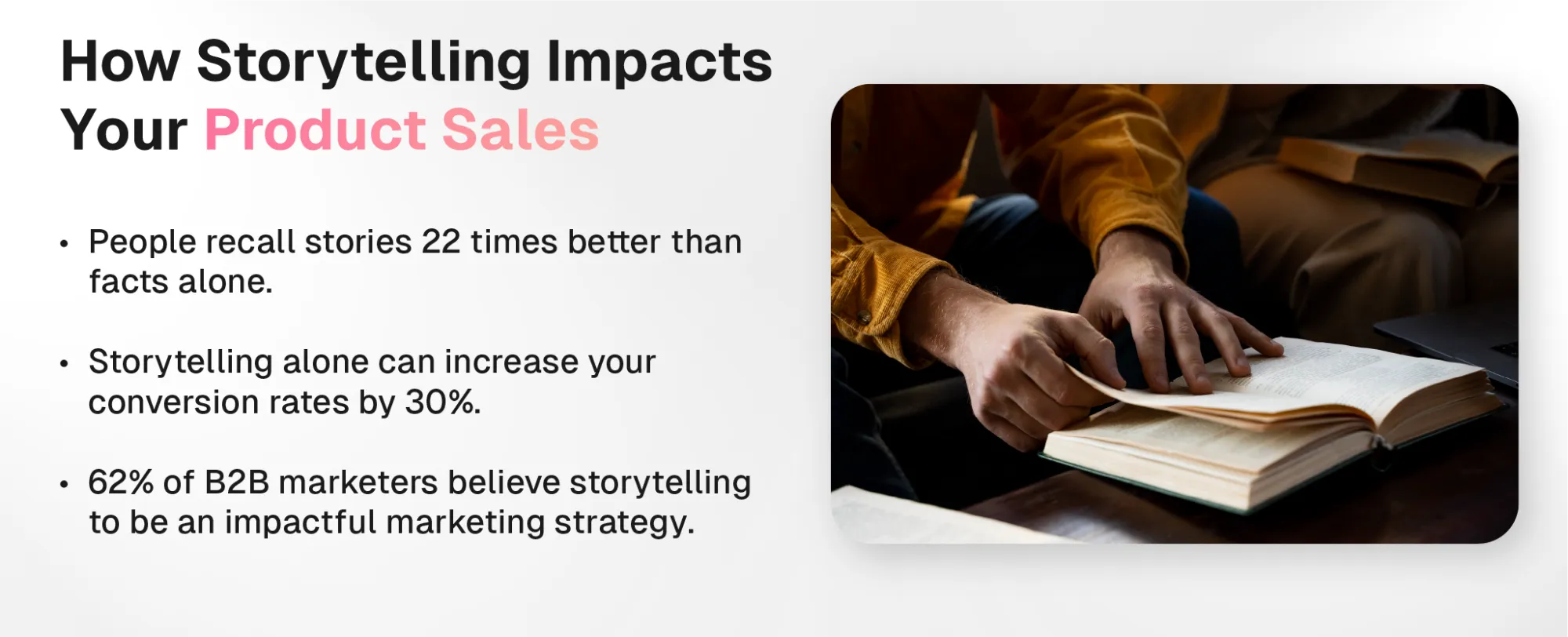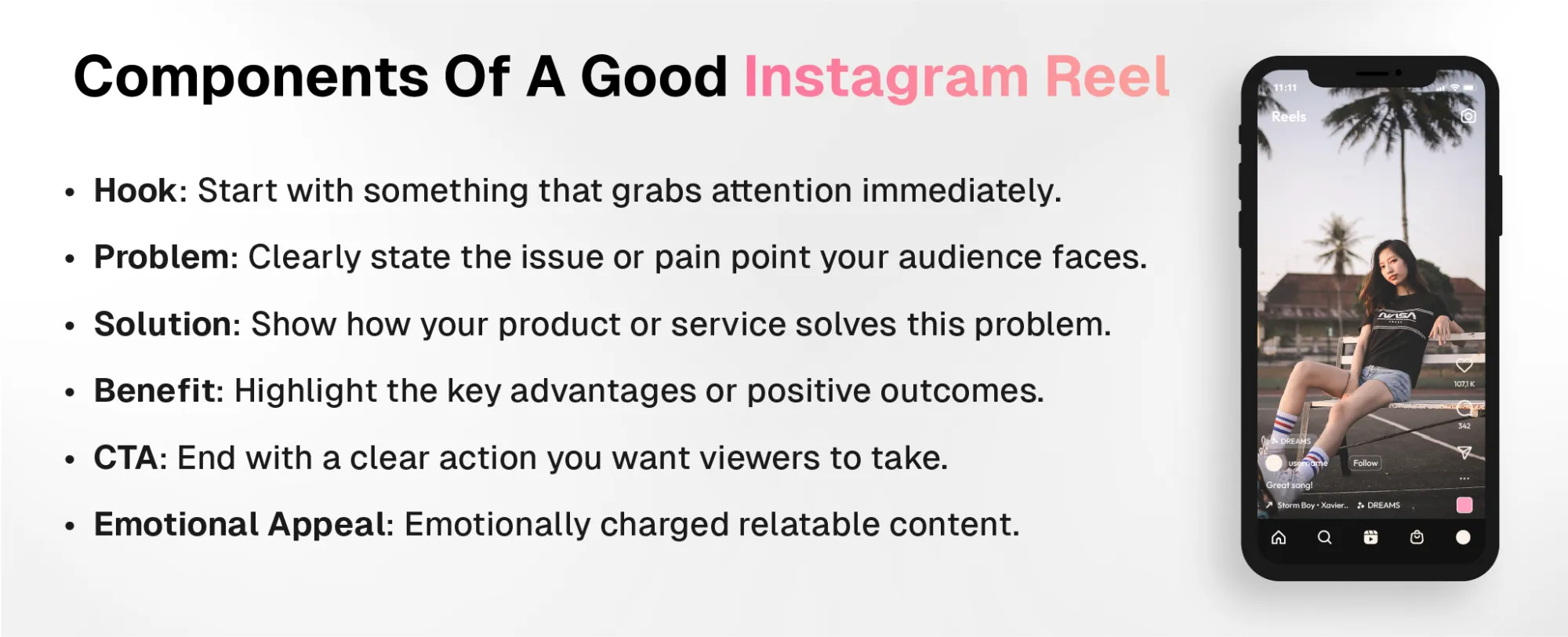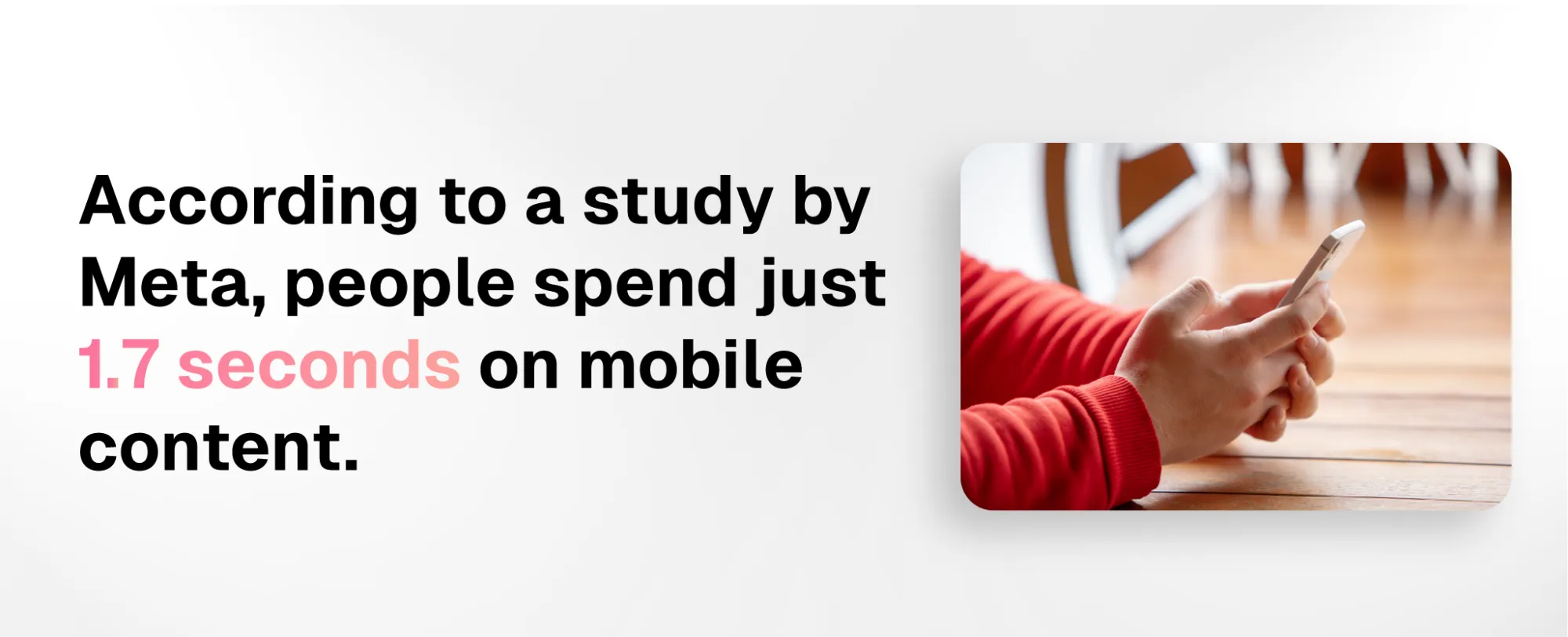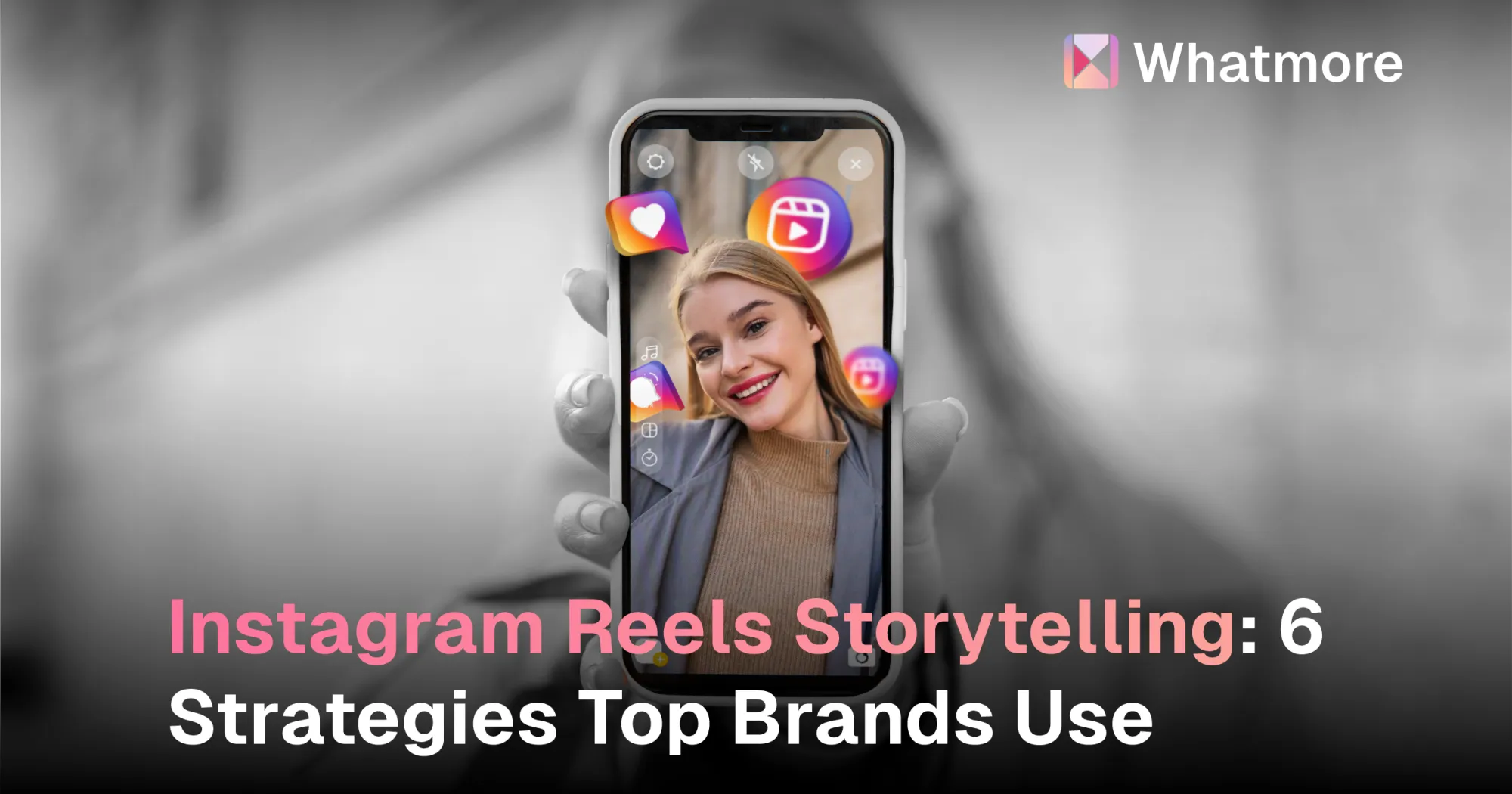You open up Instagram, excited to check how the reel you posted last week is performing.
As usual, you go to your profile, open the reels tab and boom! 276 views.
Well, that's surprising.
You try refreshing the page, but the numbers don’t change. You check again later.
Same.
Even with trending music, challenges, hashtags, and using every Instagram tip ever, your reel isn't getting the attention you want.
Why is this happening?
Why Your Reels Don’t Get Views (& Why They Can’t Convert)
Instagram reels from a brand might not work for any of the following reasons:
- Not targeting the right target audience.
- Not addressing the customer pain points in your reels (Your reels aren’t relatable enough).
- Not addressing the customer pain point in the first 4-5 seconds (Viewers aren’t getting hooked).
- You’re not using the latest trends in your reels effectively.
- Posting and not engaging with other accounts in your niche.
- Lack of scripting and storytelling in your reels impacts your brand’s recall value.
Now, think about it: What was the last Instagram reel you watched?
If you can’t remember, don’t worry — we can’t either.
Short-form content like Instagram reels and YouTube shorts requires very little attention or investment from viewers, making them easy to forget.
While you can produce reels much faster than long-form videos, if your reels don’t leave a lasting impression, they won’t benefit your brand sales.
To succeed as a brand on Instagram, your reels need to gain views and also convert these viewers into loyal customers.
Storytelling helps you do that.
Why Good Storytelling In Your Reels Boosts Product Sales
The human brain is programmed to remember stories, especially those that evoke an emotional response.
People recall stories 22 times better than facts alone. In fact, storytelling alone can increase your conversion rates by 30%.
Additionally, 62% of B2B marketers believe storytelling to be an impactful marketing strategy.

Despite this, very few brands invest in good storytelling when it comes to reels.
The reasoning is pretty obvious: Why write a script for a reel that only lasts for 60-90 seconds?
Well, because even in such a short span, a good story can capture attention, evoke emotions, naturally blend in a strong CTA, and leave a memorable impression.
This helps drive engagement, encourage shares, and ultimately strengthen your brand’s identity and message.
As a result, even a short script can help your brand stand out in the sea of reels.
How To Use Storytelling In Your Reels?
Understanding Your Reel Audience
This might seem like an odd first step, but trust us, it’s important for in creating effective brand reels.
If your goal is to get views AND increase sales, targeting the right audience is essential.
End of the day, people won’t watch reels that they can’t relate with. For example, a reel promoting a luxury watch to a budget-conscious audience will likely lead to poor engagement, regardless of your content quality.
Normally, reels are more suitable for targeting audiences aged 18-34.
To gain a deeper perspective on your audience, note down answers to the following questions:
- Who’s the target audience for this product?
- Why would they want to buy this product?
- What problem does it solve?
- What benefits does it provide for the customer?
- Which social media apps will the customer spend time on most?
Having a chat with your sales or support team and noting the most frequently asked questions will also help you get a clear understanding of who your audience is.
Overall, these answers will help you create a reel that stands out from other highly generic reels.
That way, you can create reels that truly connect and drive meaningful results.
Preparing A Good Script For Your Reels
If you want your Instagram reel to connect with people, start with a script.
A good script should have the following key components:

Then, answer these questions and fit them accordingly in your script components:
- What’s the story you want to tell?
- How does it relate to your audience’s problems or interests?
- What message do you want to share?
Let’s understand these points with an example.
Imagine you have a skincare brand.
What’s the story you want to tell?
Your story could be about a customer who had really bad acne and finally cleared it up with your product. It’s personal and real, which makes it more relatable.
How does it relate to your audience’s problems or interests?
This story hits home because many people watching might be struggling with their own skin issues and are looking for something that actually works. They’ll see someone like them having success and feel hopeful.
What message do you want to share?
The message is simple: “Our product helped someone with a problem just like yours, and it can help you too.” It’s clear, direct, and focused on solving a real issue.
By following these steps, you’ll create a script that feels personal and speaks directly to your audience’s needs.
Importance Of A Strong Hook In Short-Form Content
Out of all the script components, the hook is something we’ll recommend you spend more time on.
Meta reports that people spend just 1.7 seconds on mobile content, This means you only have 3-4 seconds to capture the viewer's attention in your reels.

The best hooks address customer's pain points right away.
For example, if you sell noise-cancelling headphones, start with a hook like, "Tired of noisy commutes ruining your focus?" This immediately connects with viewers who struggle with distractions and are looking for a solution.
We suggest you avoid gimmicky or scammy tactics, such as misleading claims like, "This will change your life forever!" or exaggerated promises like, "The best product ever, guaranteed!"
These tactics may grab attention momentarily but can damage trust and lead to poor engagement.
Instead, offer a real and relatable problem with your solution from the start to keep viewers watching.
Find and Use Trends Smartly With Your Brand
Trends are popular topics everyone’s talking about.
Using them helps your content stay fresh and grab attention because people are already interested in these trends.
How to Find Relevant Trends?
- Check Social Media: Look at Instagram’s “Explore” page and TikTok’s “For You” page to see what’s currently trending.
- Follow Influencers: See what influencers in your niche are posting. They often are updated with trends and can give you ideas.
How to Use Trends in Your Reels
- Pick Relevant Trends: Choose trends that fit your brand. For example, use a “before-and-after” trend if you sell beauty products to show results.
- Tell a Story: Use the trend to tell a story about your product. For instance, if a dance challenge is trending, show people doing the dance in your activewear.
- Stand Out: Put your own spin on the trend to make your content unique. Use the insights gained from the previous section to craft unique content that is targeted specifically towards your ideal customers.
- Post Quickly: Trends don’t last long, so post while they’re still popular.
Focus on being genuine. Ensure the trend feels right for your brand.
Don’t force it if it doesn’t fit.
Keep Your Reels Simple
A reel with too many elements or messages can dilute your main point and make it harder for viewers to understand and engage.
For example, if your reel is about a new makeup product, concentrate solely on demonstrating its application and results. Stick to the script and only add planned content and anecdotes.
This keeps your message clear and makes it easier for viewers to understand the product's benefits.
Tone and style are other important factors.
If your reel starts with a playful and energetic vibe, keep that mood throughout. Changing styles or tones midway can be confusing and disrupt the viewer’s experience.
For example, if your reel begins with a fun, upbeat introduction about a new workout routine, continue with that energetic style throughout the reel. Don’t switch to a serious motivational tone all of a sudden.
Consistency helps maintain viewer engagement and reinforces your main message.
Post Your Reels More Frequently
When you’re starting with Instagram reels, don’t worry about being perfect right away.
Instead, focus on increasing the number of reels you create. The more you produce, the more you’ll learn what works best for your audience.
Early on, it’s about experimenting and finding your audience rather than aiming for perfection.
With each new reel, you’ll gain valuable feedback and grow your skills.
How Whatmore AI Helps You Produce High-Quality Reels Easily
While pumping out simple content can bring some views, it’s the high-effort storytelling reels that truly attract your audience and boost conversions.
You need to create a strong script, use trends wisely, and add meaningful captions. However, creating these high-impact reels can be time-consuming.
That’s where Whatmore AI comes in.
Whatmore AI streamlines the process by showing you what’s trending and relevant, so you can focus on crafting high-quality reels that resonate with your audience.
You get the best of both worlds: efficient content creation and high-quality results.
Try Whatmore AI and see the results for yourself!






